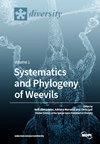Trophic Ecology during the Ontogenetic Development of the Pelagic Thresher Shark Alopias pelagicus in Baja California Sur, Mexico
IF 2.1
3区 生物学
Q2 BIODIVERSITY CONSERVATION
引用次数: 0
Abstract
The trophic ecology of the Pelagic Thresher shark (Alopias pelagicus) was evaluated based on chemical ecology using stable isotope ratios of carbon (δ13C) and nitrogen (δ15N) in the vertebrae and muscles. Individuals were caught between August 2013 and October 2019 on both the coasts of Baja California Sur, Mexico. In Bahía Tortugas, the mean vertebrae (n = 35) values were 12.72 ± 1.06‰ (δ15N) and −14.79 ± 0.61‰ (δ13C), while in muscles (n = 32) these values were 16.63 ± 0.76‰ (δ15N) and −17.18 ± 0.39‰ (δ13C). In Santa Rosalía, the mean vertebrae (n = 125) isotopic values were 14.4 ± 1.59‰ (δ15N) and −14.18 ± 0.51‰ (δ13C), while in muscles (n = 43), these values were 18.08 ± 0.96‰ (δ15N) and −16.43 ± 0.34‰ (δ13C). These results show higher δ15N values in Santa Rosalía as an effect of baseline isotopic differences between the two regions, whereas the δ13C values were lower in Bahía Tortugas, suggesting offshore ecological behavior (p < 0.05). In Santa Rosalía, there were significant differences by sex for δ15N in muscle, whereas the δ13C showed ontogenetic shifts, indicating that neonates feed in coastal areas more commonly than juveniles or adults (p < 0.05). Neither sex nor ontogenetic differences were observed in Bahía Tortugas (p > 0.05), suggesting a high overlap between their isotopic niches. Therefore, Alopias pelagicus uses the same ecological niche throughout its life, and there is consistency between sexes. The mean trophic position for both tissues and regions was 4.5, which corresponds to a tertiary predator, without any differences between stages or sex. Due to their higher energetic needs, juveniles and females showed the greatest isotopic niche amplitude; thus, their ecological niche is the widest.墨西哥下加利福尼亚南部远洋长尾鲨个体发育过程中的营养生态学
基于化学生态学的方法,采用碳(δ13C)和氮(δ15N)稳定同位素比值对远洋长尾鲨(Alopias pelagicus)脊椎和肌肉的营养生态学进行了评价。2013年8月至2019年10月期间,这些个体在墨西哥南下加利福尼亚海岸被捕。在Bahía Tortugas中,脊椎(n = 35)的平均值分别为12.72±1.06‰(δ15N)和- 14.79±0.61‰(δ13C),而肌肉(n = 32)的平均值分别为16.63±0.76‰(δ15N)和- 17.18±0.39‰(δ13C)。在Santa Rosalía中,脊椎(n = 125)的平均同位素值为14.4±1.59‰(δ15N)和- 14.18±0.51‰(δ13C),肌肉(n = 43)的平均同位素值为18.08±0.96‰(δ15N)和- 16.43±0.34‰(δ13C)。这些结果表明,Santa Rosalía较高的δ15N值是两个区域之间基线同位素差异的影响,而Bahía Tortugas的δ13C值较低,表明近海生态行为(p <0.05)。在Santa Rosalía中,肌肉中的δ15N在性别上存在显著差异,而δ13C则表现出个体发生的变化,表明幼鱼比幼鱼或成鱼更常在沿海地区觅食(p <0.05)。在Bahía Tortugas中没有观察到性别和个体发生差异(p >0.05),表明它们的同位素生态位高度重叠。因此,黄花海参一生使用同一生态位,且性别间存在一致性。各组织和各区域的平均营养位为4.5,对应于第三纪捕食者,无阶段和性别差异。幼鱼和雌鱼的能量需求较高,其同位素生态位振幅最大;因此,它们的生态位是最广的。
本文章由计算机程序翻译,如有差异,请以英文原文为准。
求助全文
约1分钟内获得全文
求助全文
来源期刊

Diversity-Basel
Environmental Science-Ecological Modeling
CiteScore
3.40
自引率
12.50%
发文量
925
审稿时长
11 weeks
期刊介绍:
Diversity (ISSN 1424-2818) is an international and interdisciplinary journal of science concerning diversity concept and application, diversity assessment and diversity preservation. It is focused on organismic and molecular diversity. It publishes reviews, regular research papers and short notes in the regular issues. Related news and announcements are also published. Our aim is to encourage scientists to publish their experimental and theoretical results in as much detail as possible. Therefore, there is no restriction on the length of the papers. Full experimental details must be provided so that the results can be reproduced.
 求助内容:
求助内容: 应助结果提醒方式:
应助结果提醒方式:


